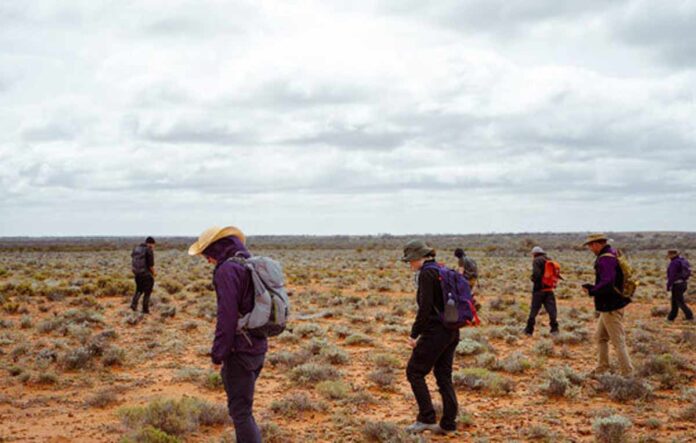Researchers used a combination of defence satellites, weather radars, and drones to locate the largest meteorite-strewn area in Australia since the Murchison meteorite fall in 1969. Nine years after a six-tonne asteroid crashed through the Earth’s atmosphere over South Australia.
Curtin University, Monash University, and the Bureau of Meteorology collaborated to determine the likely location of surviving meteorites. This they then honed in on using drones and artificial intelligence.
The discovery, according to Dr Hadrien Devillepoix of Curtin University’s Space Science and Technology Centre (SSTC), was the first time meteorites were discovered using non-US radar data, made possible by the Bureau of Meteorology recently making its own weather radar data available for research.
“Having access to weather radar data allows us to track meteorites as they fall through the lower atmosphere, similar to rain,” Dr Devillepoix explained.
“We discovered meteorite signatures from the 2013 event. It allowed us to map the 6km fall zone just north of Port Augusta.”
“Meteorites were automatically identified in drone survey images of the fall zone using a new technique developed by SSTC’s Seamus Anderson.”
“It is a world first to use artificial intelligence and machine learning to map a meteorite-strewn field. And searching such a large area on foot would have taken weeks rather than days.”
Professor Andy Tomkins of Monash University led the field search, which yielded 44 samples weighing slightly more than 4kg.
“These samples are all from a six-tonne asteroid that would have broken up high in our atmosphere,” Professor Tomkins said. “This event is exciting because it is the first strewn field discovered since the famous Murchison meteorite fall in 1969.”
“Samples were collected carefully to avoid contamination by microbes from outside the natural environment, as directed by Monash University microbiologist Dr Rachael Lappan.” Dr. Lappan and her colleagues will now conduct the first investigation into how microbes interact with a newly fallen meteorite.
“This is an opportunity to test the theory that when microbes first enter a new environment. They survive by consuming minerals and even gases from the surrounding environment.”
Dr Joshua Soderholm of the Bureau of Meteorology said that using radar data to help locate meteorite remnants was an exciting new application for the technology.
“The Bureau’s weather radars are used primarily for monitoring precipitation. But are also capable of detecting anything in the sky, including birds, bats, and insects, but using them to hunt for meteorites was unprecedented,” Dr. Soderholm explained.
Mr Ben McHenry of the South Australian Museum, which will soon display a collection of meteorite stones, said the samples were an invaluable addition to the museum’s collection.
“This is a fantastic collaboration between the universities, the Bureau of Meteorology, the Australian Synchrotron, and our museum to share the excitement of this discovery with the general public.”
The samples will be on display at the South Australian Museum as part of the Six Extinctions exhibition from November 26 to February 5, 2023.
Scientists from Monash University and Curtin University are conducting additional research on the meteorites. They hope to apply the radar technique to other meteorite and space debris falls.

